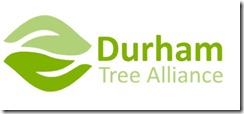Durham County lost just less than 2% of its tree canopy moving from 98,000 acres down to 96,240 acres in less than a decade. About 51% of the County remains covered in hardwood and evergreen forests including nearly 40% of the City of Durham.
This is remarkable because, while Durham is the 17th smallest county, it is the 6th most populous, having grown another 20% over just the last decade. It is also home to the State’s fifth most populous urban area, the City of Durham. By comparison Forsyth County, one and a half times more land area than Durham and home to Winston-Salem the fourth largest city, is down to 80,000 acres of trees.
By comparison Forsyth County, one and a half times more land area than Durham and home to Winston-Salem the fourth largest city, is down to 80,000 acres of trees.
Both Durham County and the City of Durham remain more forested than the averages for the state, 49% and other urban areas, 33%. While only slightly more forested than Mecklenburg County at 50%, Durham is considerably more than Wake County at 44% which was burning an acre an hour in development prior to the slowdown.
The City of Durham has fallen behind the state’s largest city, Charlotte, which has preserved 46% of its tree canopy and participated in a “best practice analysis” documenting the economic value of trees as part of its “green infrastructure in conjunction with an organization called American Forests.
Trees not only clean the air, purify water, prevent soil erosion and storm run-off as well as pollution, they are a key part of North Carolina’s personality, its unique-sense-of-place and brand and a top-of-mind aesthetic cited by virtually every relocating or expanding business, newcomer and visitor.
I happen to live on a hill separated by a heavily forested mile-long valley from Downtown Durham which unfortunately has a remaining tree canopy of less than half a percent despite the best efforts of some developments like American Tobacco.
There are about 80 trees alone around my home, all tall and mature and just part of a 10-20 acre tree cover for my immediate neighborhood alone. I can also see tree covered hills and dales falling away to the south toward Jordan Lake and the west toward Chapel Hill.
For me and many in Durham, tree cover is also a significant part of home and property value. There are also studies proving a direct correlation between community pride and aesthetics including trees.
I fear we’ve taken trees for granted in North Carolina. They grow more quickly here than in many states across the country. But in many parts of the state they’ve been clear cut for housing developments or timber sales.
We’ve also permitted the forests that remain in the state to be blighted from roadways by outdoor billboards, which pay nothing for the views they purposely obstruct nor nearly enough to justify swathing roadside trees belonging to the public.
It is commendable in Durham that we are worrying about replacing street and neighborhood trees as they age-out but we lack a sense of urgency and leadership resolve. The embryonic Durham Tree Alliance, now in the formative stages through Keep Durham Beautiful and the City’s Urban Forestry Division is a start. The Alliance will eventually be a way for residents and businesses to work together to increase the community’s tree canopy.
If there isn’t already, an impact fee on any clear cutting for developments should fund even more replacement trees either in that area or the community overall.
Am I becoming a “tree-hugger” these days?” Hell yes, and so is anyone who cares about the future viability of North Carolina as a business climate, an ecosystem and a quality place to live, work and visit!
Durham’s tree canopy is monitored and measured by Durham City-County Planning in part as a performance measure.
No comments:
Post a Comment